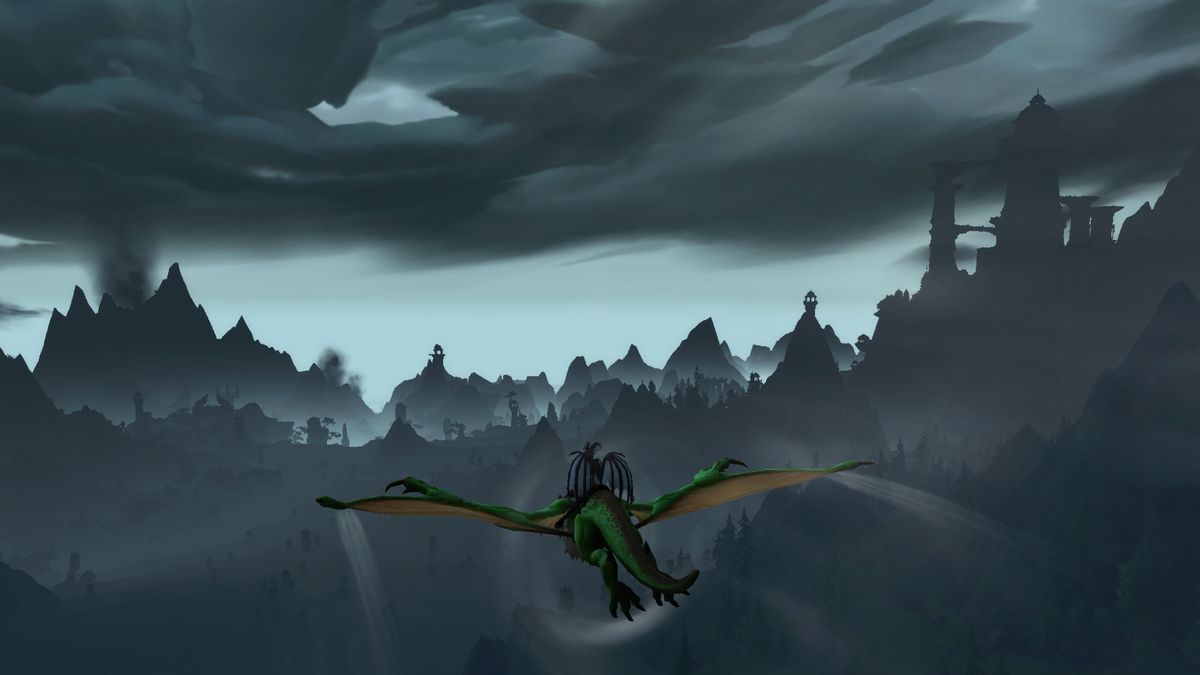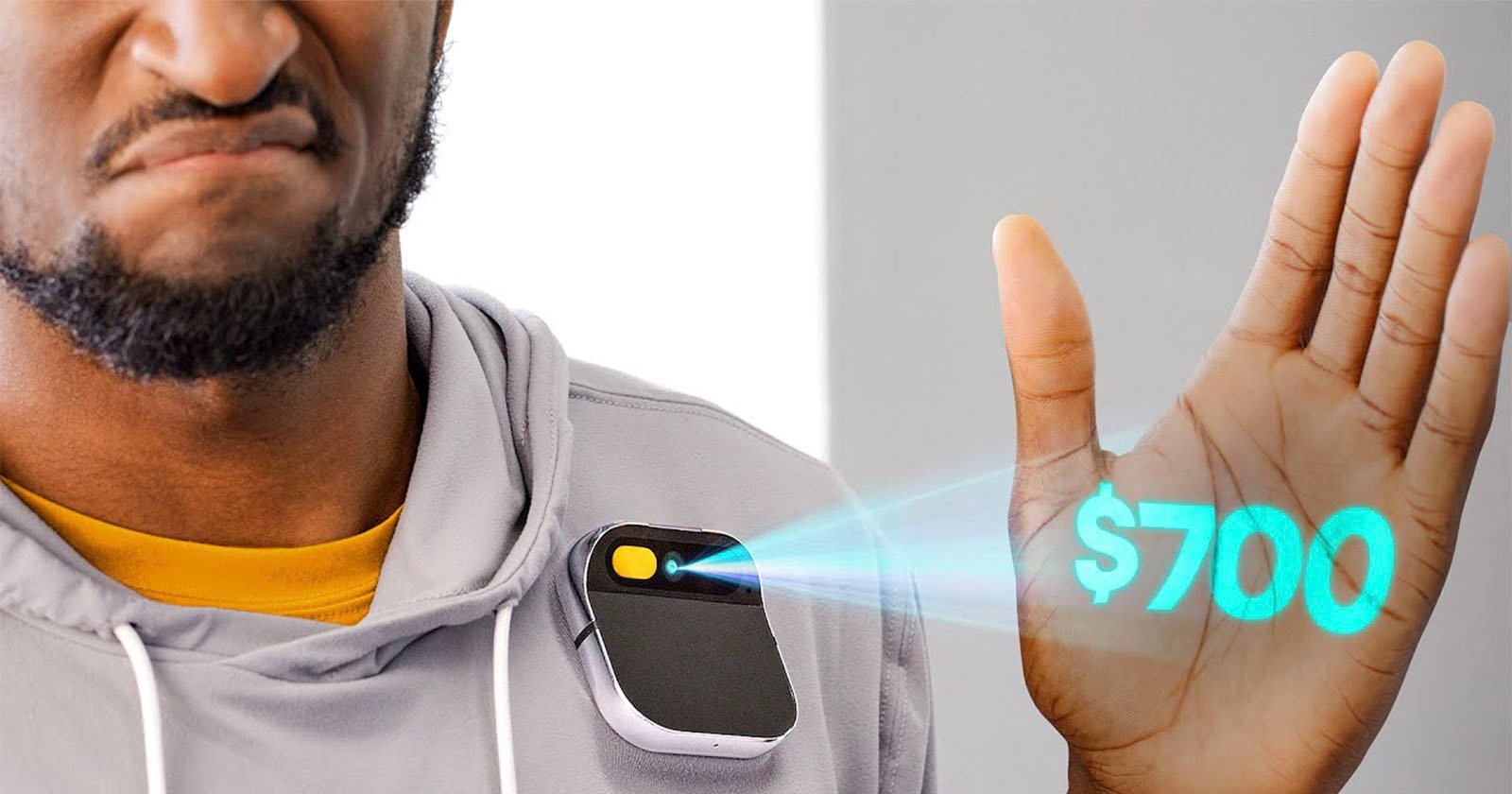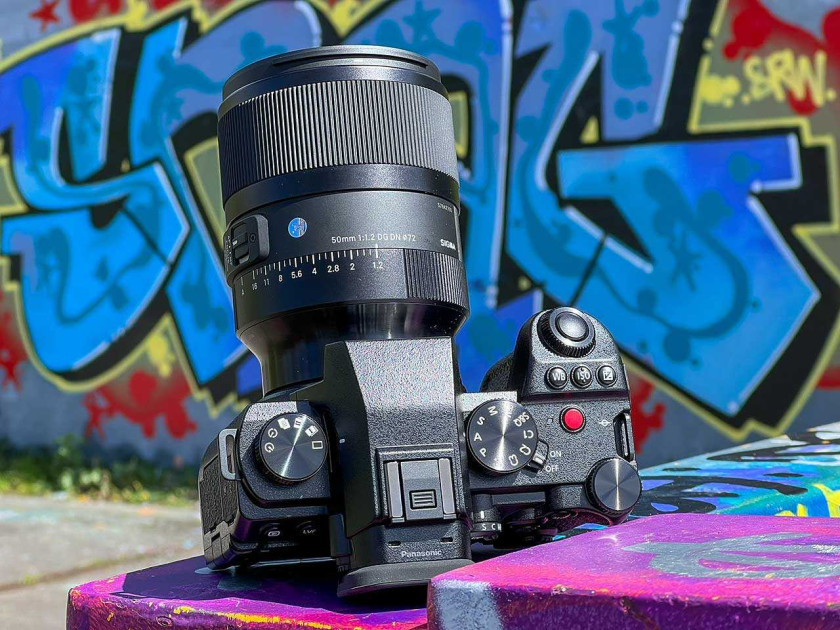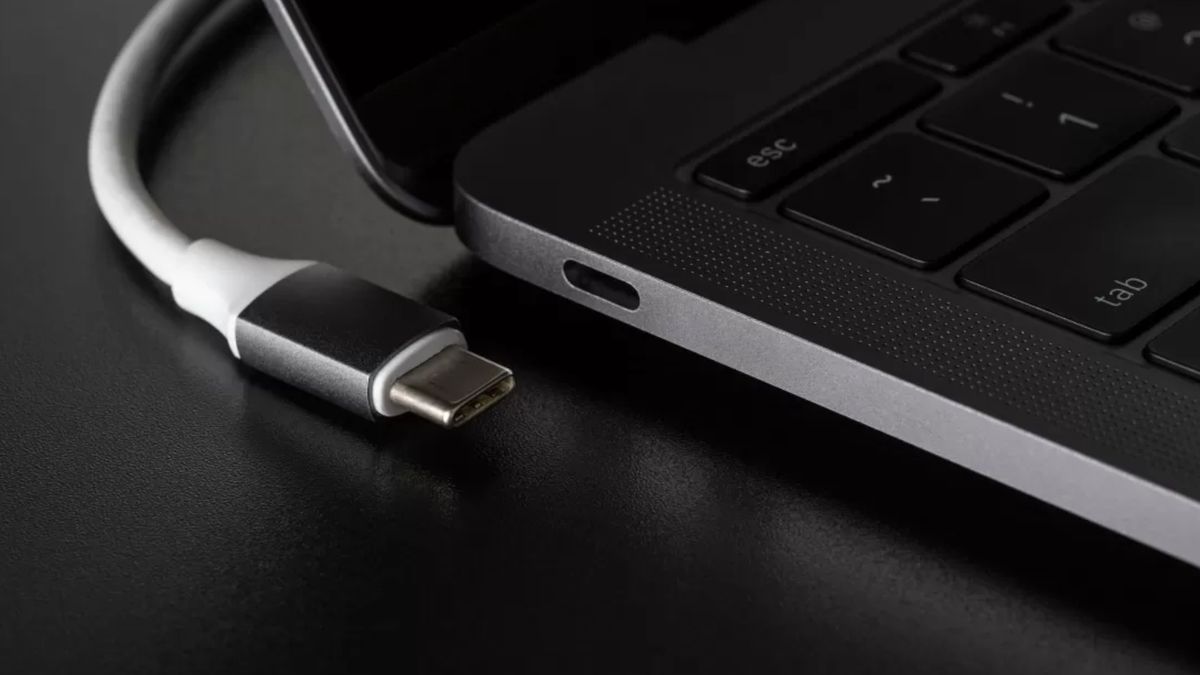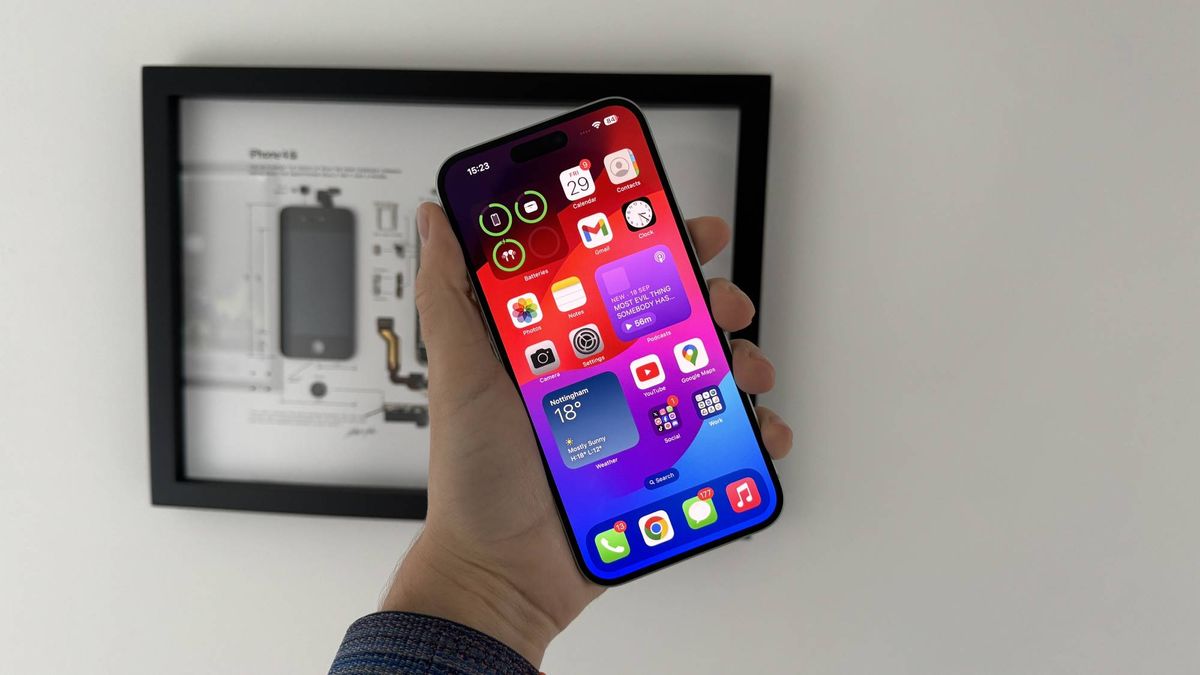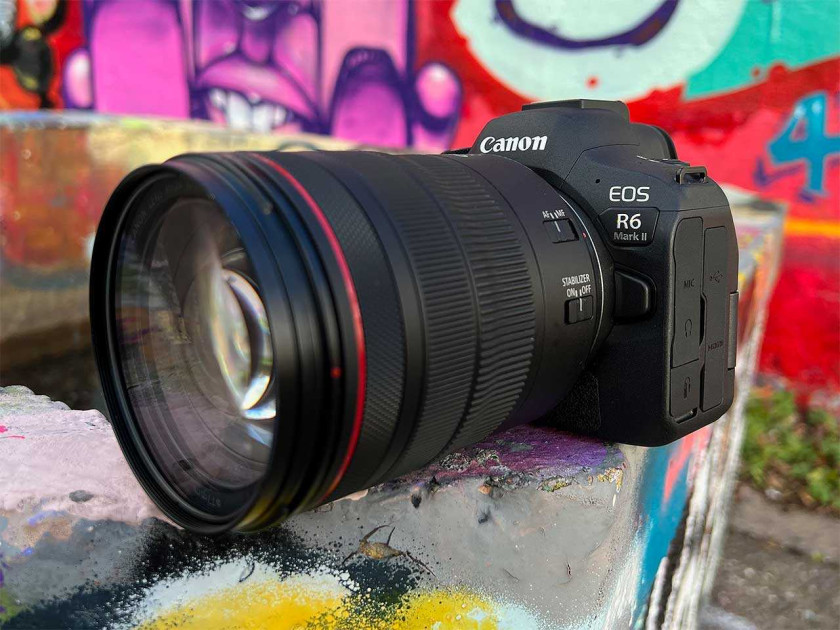

Introduction
The new Canon EOS R6 Mark II is a mid-range full-frame mirrorless camera which replaces the original EOS R6 that was initially released in 2020.
The R6 II utilities a new 24.2 megapixel CMOS sensor which offers a 20% increase in resolution compared to its 20 megapixel predecessor.
It offers a class-leading burst shooting rate of 40fps with the electronic shutter, double that of its predecessor, making it Canon’s fastest ever full-frame mirrorless camera, surpassing even the standard 30fps mode offered by the range-topping EOS R3.
Other key features include the latest DIGIC X processor, 6K/60p unlimited video recording, 8-stops of IBIS, expanded 50-204,000 ISO range, improved AI tracking which additionally recognises horses, aircraft and trains, new OVF simulation mode, dual SD UHS II card slots, 5GHz wi-fi and Bluetooth 5.0, and webcam and live streaming support.
The Canon EOS R6 Mark II body only is available now priced at £2,779.99 / €3,149.99 / $2,499.00 in the UK, Europe and US respectively. It is designed and made in Japan.
Ease of Use
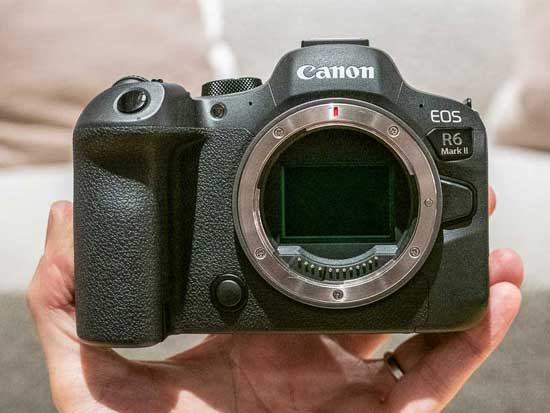 |
Looking at the EOS R6 Mark II alongside the original model, you’d be very hard pressed to tell it apart from its 3-year-old predecessor.
Canon have changed a few aspects of the external control layout, most notably adding a new On/Off/Lock switch on the right-hand-side of the top-plate and a new Camera/Movie switch on the left, but otherwise the two models are virtually indistinguishable, other than the addition of Mark II to the front nameplate.
This lack of change for changes sake does mean that if you’re an original EOS R6 owner, you’ll feel instantly at home using this new version. There are also no quirky multi-controllers or multi-function touch bars here to provoke controversy, with the R6 II having a much more conventional control layout that’s very much in the long tradition of previous EOS cameras, mirrorless and DSLR alike.
Despite the Canon EOS R6 Mark II utilising a mostly polycarbonate body, impressively it still offers the same level of weather-proofing as the EOS 6D Mark II and the 5D Mark IV DSLR cameras.
Therefore it benefits from being both lightweight – 588g body-only or 670g with both a battery and memory card fitted (10g lighter than the original R6) – and fully weather-sealed. It measures 138.4 × 98.4 × 88.4 mm, making it a whopping 1mm bigger than the R6!
The Canon R6 II benefits from having a very deep handgrip that comfortably accommodates four fingers, something that can’t be said of a lot of mirrorless cameras that suffer from having too small a grip.
The minimalist front plate sports just a single control – the classic Depth of Field preview button, which helps you determine what your photos will look like before the image is taken. There’s also a porthole for the AF assist light and a lozenge shaped button for releasing the lens.
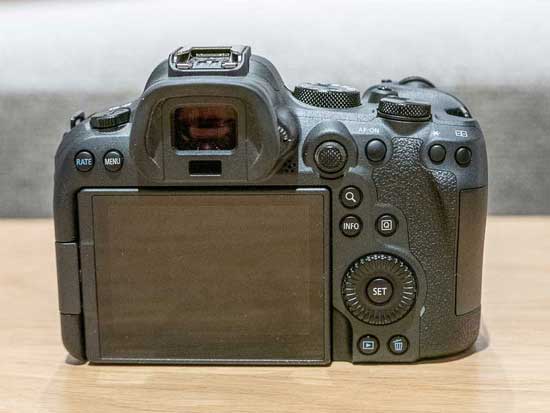 |
At the heart of the EOS R6 Mark II is a brand new 24.2 megapixel CMOS sensor which offers a 20% increase in resolution compared to its predecessor.
This should answer some of the critics of the original model’s more modest 20 megapixel sensor, although inevitably there will be calls for even more resolution to have been provided.
We think that 24 megapixels is the sweet spot for this class of camera, though, especially given the blistering burst shooting speeds that the R6 II offers.
The ISO range still runs from 100-102,400, which can be further expanded up to ISO 204,800 and down to ISO 50, just like on the original model.
The Canon EOS R6 Mark II again incorporates 5-axis In-Body Image Stabilisation (IBIS). It has been designed to work collaboratively with the IS system that’s built into many RF-mount lenses, with the lens and the sensor working together to correct pitch and yaw and the sensor correcting the X-Y and roll movements.
This intelligent stabilisation system provides up to a frankly incredible 8-stops of stabilisation when the camera is paired with certain lenses, allowing you to hand-hold the camera for up to 4 seconds
and still get critically sharp results.
Even some non-stabilised lenses such as the RF 85mm F1.2L USM or RF 28-70mm F2L USM offer 8 stops of stabilisation when they’re mounted on the EOS R6 Mark II, thanks to the large 54mm diameter of the of the RF Mount.
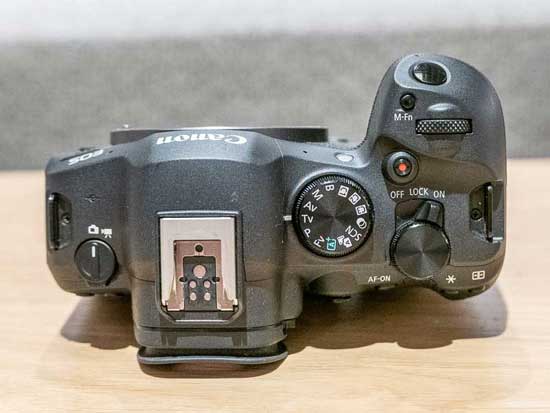 |
The EOS R6 Mark II can also stabilise older, non-IS lenses including any EF lens that is fitted to the R6 II via the Canon EF-EOS R mount adapter. The stabilisation system will also work with lenses from other manufacturers – you just need to input the focal length into the camera’s menu system.
In practice, the EOS R6 Mark II and the RF 24-105mm F4 L IS USM lens that we were sent for testing provided up to the headline grabbing 8-stops of stabilisation – it really is possible to hand-hold this combination at previously impossibly slow shutter speeds and still maintain critical sharpness.
The Canon R6 II now offers a class-leading burst shooting rate of 40fps with the electronic shutter, double that of its predecessor. It can also shoot at 12fps with the mechanical shutter, both modes supporting full auto exposure (AE) and auto focus (AF) tracking.
There’s a tiny amount of viewfinder and LCD blackout between each frame when shooting at 40fps, but it’s barely discernible to the naked eye.
Incredibly the R6 Mark II can record 1,000 or more compressed raw images when shooting at 12fps before its buffer becomes full. The buffer is much smaller when using the 40fps mode at 190 JPEGs, 140 Compressed Raws, or 75 Uncompressed RAWs.
There’s also a new Raw burst mode in which the camera can shoot at 30fps with 0.5 seconds of pre-capture built-in which should help even more with capturing that decisive sporting or wildlife moment.
The R6 II is the first Canon camera to feature the next generation Dual Pixel CMOS AF II focusing system for both stills and video. Billed as the world’s fastest AF, the camera is capable of focusing in as little as 0.05 seconds.
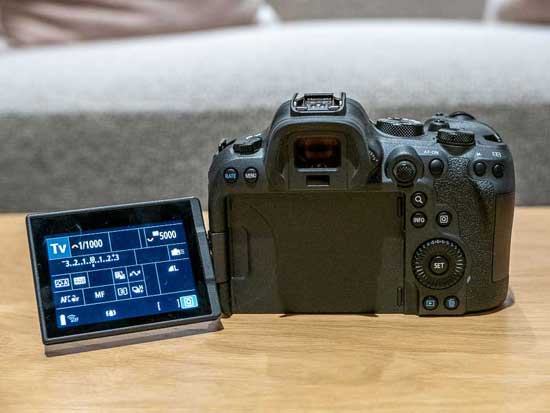 |
It offers 4,897 manually selectable and 1,053 automatically selectable AF points with 100% frame coverage.
Impressively the EOS R6 Mark II can also focus in light levels as low as -6.5EV (when used with an F1.2 lens), which is a real boon to low-light shooting/
Thanks to its Digic X processor and new sensor, the EOS R6 Mark II even better deep-learning based automatic face, eye and animal AF tracking modes than the R6 Mark I.
The improved AI tracking now additionally recognises horses, aircraft and trains as well as the humans, dogs, cats and birds that the original version could automatically detect.
Cleverly, if the camera is set to Face-only AF and the tracked subject exits the frame, it won’t automatically then focus on the background, instead re-focusing on the face when it reenters the scene.
The newer model also now features a special auto-select mode for subjects, plus the same Flexible AF mode from the EOS R3, and eye tracking now functions in all AF modes.
There’s a new On/Off/Lock switch on the right hand side of the top-plate, with the camera leaping into life almost instantly, and a new Camera/Movie switch over on the left. The multi-controller on the rear has been subtly redesigned, and Canon’s latest multi-function shoe has been implemented.
Otherwise you’ll feel instantly at home with the Mark II version if you’re upgrading from the original R6.
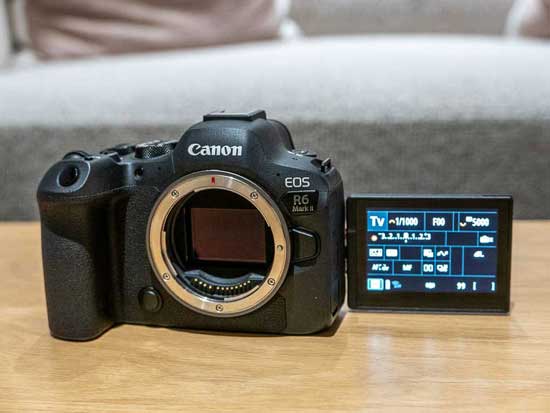 |
There’s a small but responsive shutter release button at the top of the handgrip, with the tiny M-Fn behind it. This provides quick access to some of the camera’s key controls, including ISO, continuous shooting, AF, white balance and exposure compensation.
Behind that is the front control dial for principally setting the aperture or shutter speed, with a small, red one-touch movie record button behind it sitting proud of the camera body.
The Lock button on the EOS R6 has now been incorporated into the Off/Lock/On switch on the new EOS R6 Mark II. As its name suggests, this locks the two control dials on top of the camera and the rear control wheel so that you can’t accidentally change the camera’s key settings.
Completing the top of the camera is the rear control dial that’s ideally placed for thumb operation and the new Camera/Movie switch on the left, which makes it much more intuitive to switch between these two shooting modes.
The Canon R6 II offers two brand new shooting modes – multiple exposure mode (JPEGs only) and a Panorama mode, as previously seen on the recently introduced EOS R7. It also offers in-camera focus bracketing which will be a big pull for many stills photographers.
Turning to the rear of the Canon R6 II, it offers an array of controls that will be instantly familiar to anyone who has used an EOS 5-series DSLR camera before, including the classic Canon control wheel. There’s also a slightly redesigned joystick that is a little more tactile than the one found on the EOS R6.
Alongside the Menu bottom on the far left is the Rate button, which allows you to assign star ratings to your images during playback (Off, 1-5 stars).
The EOS R6 Mark II has exactly the the 0.5-inch 3.69 million dot EVF as the EOS R6, which is still impressive to look through, working up to 120fps for minimal lag when shooting fast-moving subjects.
The new model now incorporates a special OVF simulation mode, similar to the one on the EOS R3, which uses HDR technology to simulate a more “real-world” view of the scene.
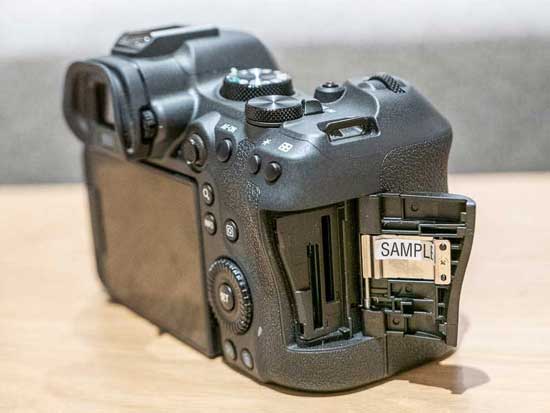 |
One of the main control innovations on the EOS R6 Mark II is the inclusion of the classic Canon control wheel with the SET button at its heart, which will be instantly familiar to anyone who has used a Canon EOS 5-series DSLR camera before.
The one on the EOS R6 Mark II actually serves less purpose than the one on the EOS 5-series, though, simply because there are already two control dials on top of the camera for setting the aperture and shutter speed, and one on the RF lenses which can be usefully configured to control the ISO speed, amongst other things.
So the classic Canon control wheel is mainly used for quickly scrolling through the menu system and during image playback instead. As the camera also has a touch-screen, both of these functions can be more quickly and intuitively controlled via touch, which does beg the question as to why Canon decided to include the control wheel at all.
The EOS R6 Mark II has exactly the same 3-inch, 1.62 million dot, vari-angle LCD screen as on the original model, which tilts out to the side and faces forwards for more convenient vlogging and selfies. It can also be usefully folded flat against the back of the camera to protect it when in transit in a camera bag.
A proximity sensor is located directly beneath the viewfinder, which automatically switches between the EVF and LCD screen. When the LCD screen is swung outwards, the EVF is cleverly turned off automatically.
A tilting LCD screen always helps to encourage shooting from creative angles and it also helps make the EOS R6 Mark II ideally suited to movie-shooting.
As mentioned above, the LCD screen is touch-sensitive, allowing you to control everything from setting the AF point and firing the shutter, navigating the menu systems and browsing your images during playback. It’s a very precise, responsive system that’s a veritable joy to use.
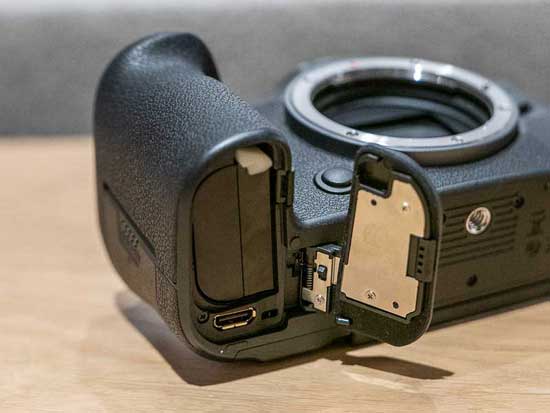 |
Alongside the rear joystick are three classic Canon controls – the AF-On button for people who prefer back-button focusing, the Auto-exposure Lock button (denoted by a star) and the AF area selection button which makes it easier to switch the autofocus point when holding the camera to your eye.
Underneath the AF-On button are a cluster of three buttons – the Magnification button, Info Button and the Quick button which opens the Quick Control screen, which provides instant access to 10 key camera controls.
Completing the rear of the EOS R6 Mark II are the self-explanatory Playback and Delete buttons located underneath the rear control wheel.
On the right hand-side of the camera is the memory card compartment. The EOS R6 Mark II continues to support two SD UHS II cards via dual slots, and you can choose to record to both cards simultaneously.
Given that it can now shoot at 40fps, it would have been great if the faster CFExpress standard had been incorporated, but maybe that’s something that we’ll see on a future Mark III.
On the left hand-side of the camera are three rubber flaps housing five different connections. The Canon EOS R6 Mark II has a microphone port, headphone jack, remote control port, USB-3 port and a mini HDMI connection – all the things that any enthusiast photographer or videographer would need from a connectivity point of view, other than a full-size HDMI port.
The R6 II continues to use the same LP-E6NH long life battery that is also supplied with the original R6, but Canon have somehow managed to significantly extend the CIPA-rated battery life from 380 shots when using the EVF to 450, and from 510 shots when using the LCD screen to 760.
If one battery isn’t enough for you, the EOS R6 Mark II is compatible with exactly the same BG-R10 Battery Grip that its predecessor supported, again making upgrading easier.
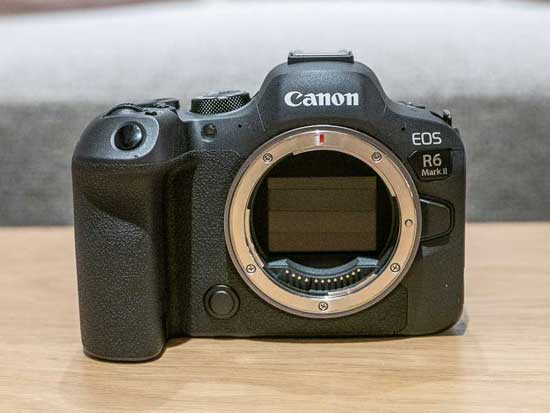 |
It gives users the ability to power the R6 II using two batteries (LP-E6/N/NH) and also offers duplicate controls for easier vertical shooting. Note that the batteries do have to be charged whilst the grip is fitted on-camera.
The Canon EOS R6 II can record 4K video up to 60p in 10-bit, achieved through oversampling from 6K, promising slightly better quality than the original R6 which oversampled from 5.1K. It also ups the ante somewhat by offering 6K/60p ProRes Raw recording, but only externally via HDMI rather than internally.
1080p slow-motion recording is still available with AF support, but the maximum frame rate has been increased up to 180fps on the new model. There’s also no longer a 30-min time limit on recording as on the original R6 and Canon claim that rolling shutter has been reduced.
Cleverly, if the camera is set to Face-only AF and the tracked subject exits the frame, it won’t automatically then focus on the background, instead re-focusing on the face when it reenters the scene.
The Mark II R6 also offers several new video features like focus breathing correction, a false colour exposure aid, a 3/5 second pre-recording function, CLog3 profile, and a quick control screen just for video.
With built-in updated Bluetooth v.5 and Wi-Fi (5GHz) support, the EOS R6 Mark II can be easily connected to a smartphone and networks allowing high-speed file sharing and FTP/FTPS transfer.
The R6 II can also be remotely controlled using Canon’s Camera Connect 3.0.0 and EOS Utility apps and tethered to a PC or Mac via Wi-Fi or high-speed USB 3.2. It also now offers the ability to operate both as a webcam or for live streaming via UVC/UAC.
Image Quality
All of the sample images in this review were taken using the 24 megapixel Fine JPEG setting, which gives an average image size of around 8Mb.
The Canon EOS R6 Mark II produced still images of outstanding quality during the review period.
This camera produces noise-free JPEG images from ISO 50 all the way up to ISO 12800, with noise first appearing at ISO 25600. The faster settings of 51200 and 102400 display quite a lot of noise, but they’re still fine to use for making smaller prints and web images. Even the fastest expanded setting of ISO 204800 can be used at a push.
The EOS R6 Mark II proved to be very capable in low-light, with the maximum shutter speed of 30 seconds and the Bulb mode allowing you to capture enough light in all situations.
The various different Picture Styles and Creative Effects are a real benefit, all of which can be previewed before you take the shot, as are the HDR settings, focus stacking and multiple exposure modes.
Support for the latest HEIF 10-bit file format is still a little thin on the ground, but should offer a degree of future-proofing if it’s more widely adopted.
Noise
ISO sensitivity can be set between ISO 50 and ISO 204800 in full-stop increments. Here are some 100% crops which show the noise levels for each ISO setting, with JPEG on the left and RAW on the right.
| JPEG | RAW |
|
ISO 50 (100% Crop) |
ISO 50 (100% Crop) |
 |
 |
|
ISO 100 (100% Crop) |
ISO 100 (100% Crop) |
 |
 |
|
ISO 200 (100% Crop) |
ISO 200 (100% Crop) |
 |
 |
|
ISO 400 (100% Crop) |
ISO 400 (100% Crop) |
 |
 |
|
ISO 800 (100% Crop) |
ISO 800 (100% Crop) |
 |
 |
|
ISO 1600 (100% Crop) |
ISO 1600 (100% Crop) |
 |
 |
|
ISO 3200 (100% Crop) |
ISO 3200 (100% Crop) |
 |
 |
|
ISO 6400 (100% Crop) |
ISO 6400 (100% Crop) |
 |
 |
|
ISO 12800 (100% Crop) |
ISO 12800 (100% Crop) |
 |
 |
|
ISO 25600 (100% Crop) |
ISO 25600 (100% Crop) |
 |
 |
|
ISO 51200 (100% Crop) |
ISO 51200 (100% Crop) |
 |
 |
|
ISO 102400 (100% Crop) |
ISO 102400 (100% Crop) |
 |
 |
|
ISO 204800 (100% Crop) |
ISO 204800 (100% Crop) |
 |
 |
File Quality
The Canon EOS R6 Mark II has three different file quality settings – Raw, Fine and Normal. Here are some 100% crops which show the difference.
| Fine (8.1Mb) (100% Crop) | Normal (4Mb) (100% Crop) |
 |
 |
| RAW (25.9Mb) (100% Crop) | |
 |
JPEG vs HEIF
Compared with the 8 bits (256-level greyscale) of the JPEG format, HEIF is capable of storing image data at 10 bits (1024-level greyscale) or higher, and also supports the Rec. 2020 standard, which boasts an extremely wide color gamut.
What’s more, HEIF is compatible with the HEVC (H.265) codec, which offers a higher compression efficiency in storage compared with JPEG files of the same image quality.

JPEG
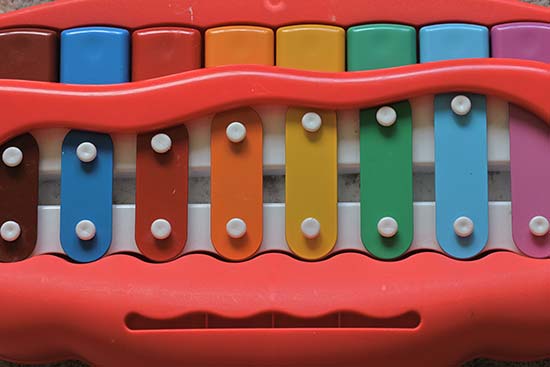
HEIF
HDR
The Canon EOS R6 Mark II’s HDR Mode captures three different exposures and combines them into one, retaining more shadow and highlight detail, with an Auto mode, three different strengths and several types of HDR style available.
Multiple Exposure
The EOS R6 Mark II’s multiple exposure mode allows you to take between two and nine images and merge them into a single photo in-camera.
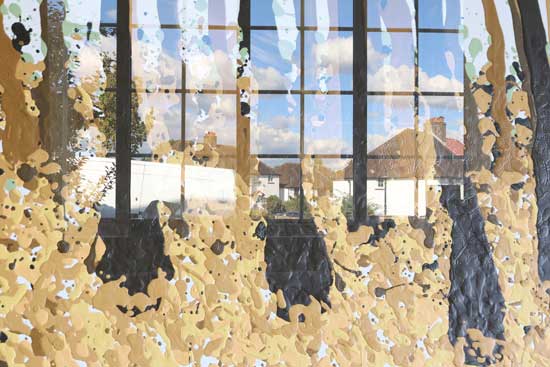
Picture Styles
Canon’s Picture Controls are preset combinations of different sharpness, contrast, saturation and colour tone settings. The EOS R6 Mark II’s seven available Picture Controls are shown below in the following series, which demonstrates the differences. There are also three User Defined styes so that you can create your own look.
|
Standard |
 |
|
Portrait |
 |
|
Landscape |
 |
|
Fine Detail |
 |
|
Faithful |
 |
|
Neutral |
 |
|
Monochrome |
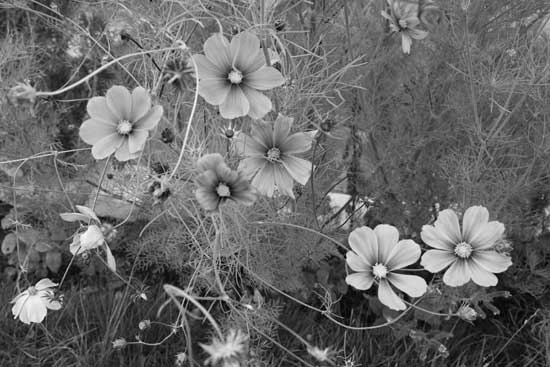 |
Creative Filters
The Creative Filters shooting mode offers 10 different options to help spice up your JPEG images.
Sample Images
This is a selection of sample images from the Canon EOS R6 Mark II camera, which were all taken using the 24 megapixel Fine JPEG setting. The thumbnails below link to the full-sized versions, which have not been altered in any way.
Sample RAW Images
The Canon EOS R6 Mark II enables users to capture RAW and JPEG format files. We’ve provided some Canon RAW (CR3) samples for you to download (thumbnail images shown below are not 100% representative).
Sample Movies & Video
This is a sample 4K movie at the quality setting of 3840×2160 at 50 frames per second. Please note that this 20 second movie is 595Mb in size.
This is a sample 4K movie at the quality setting of 3840×2160 at 50 frames per second. Please note that this 15 second movie is 613Mb in size.
This is a sample 4K movie at the quality setting of 3840×2160 at 50 frames per second. Please note that this 16 second movie is 633Mb in size.
This is a sample 4K movie at the quality setting of 3840×2160 at 50 frames per second. Please note that this 16 second movie is 632Mb in size.
This is a sample 4K movie at the quality setting of 3840×2160 at 25 frames per second. Please note that this 15 second movie is 314Mb in size.
This is a sample slow-motion movie at the quality setting of 1920×1080 at 180 frames per second. Please note that this 26 second movie is 99Mb in size.
This is a sample slow-motion movie at the quality setting of 1920×1080 at 180 frames per second. Please note that this 22 second movie is 82Mb in size.
This is a sample slow-motion movie at the quality setting of 1920×1080 at 180 frames per second. Please note that this 25 second movie is 95Mb in size.
Product Images


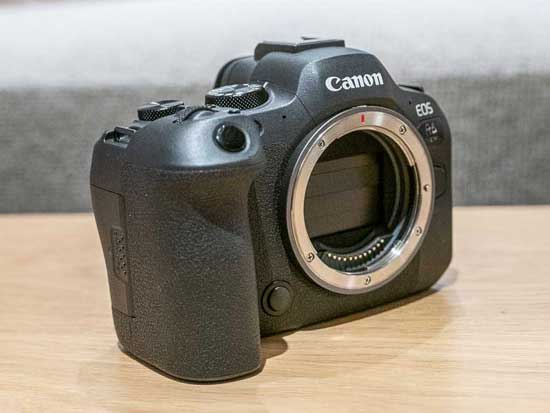
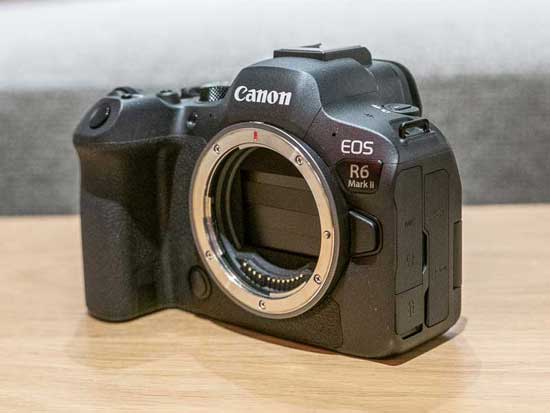


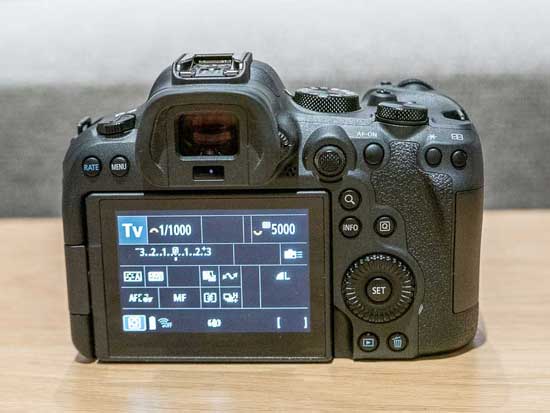
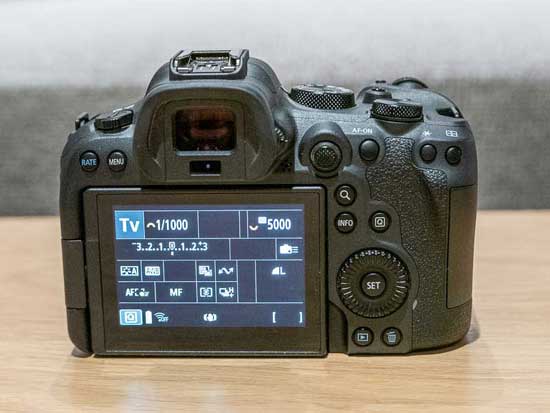
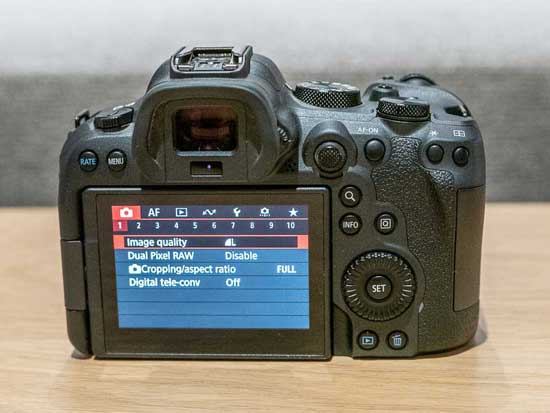
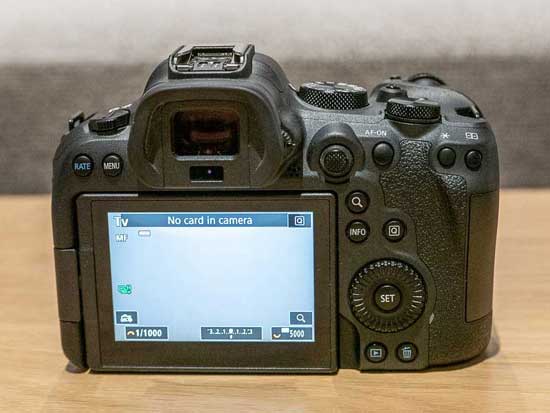



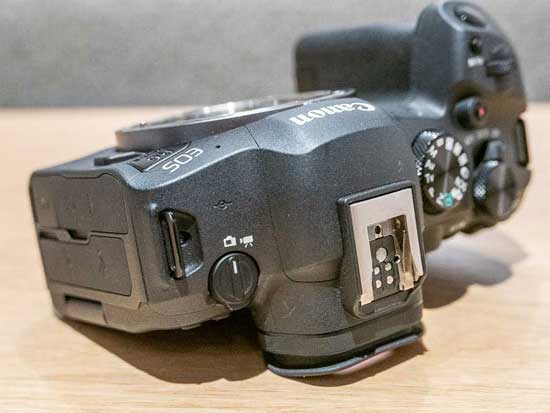
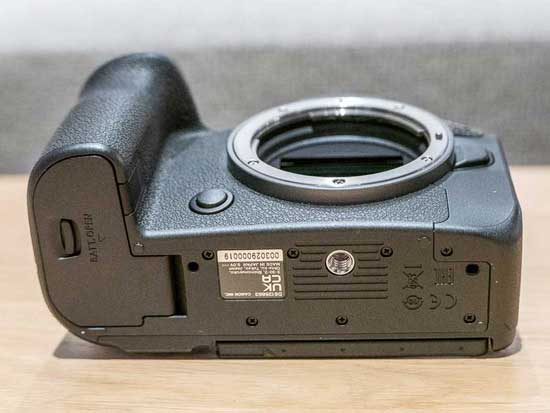
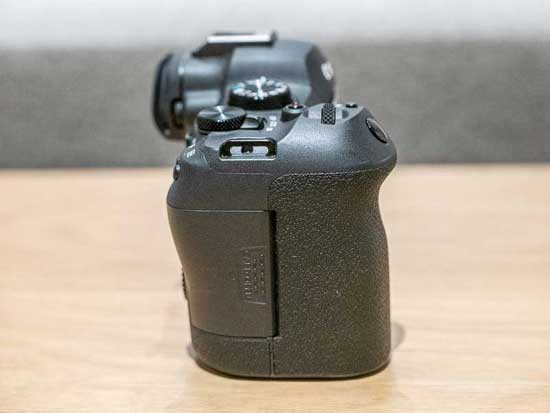
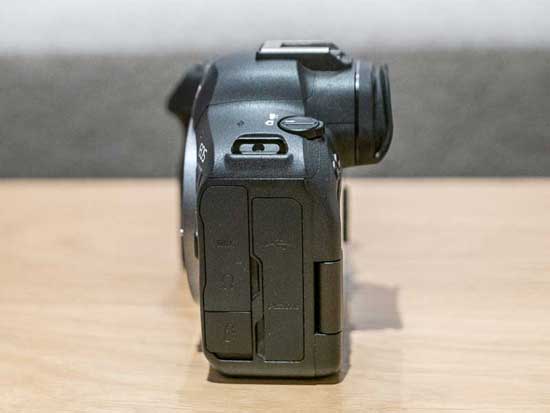



Conclusion
The new Canon EOS R6 II is a solid rather than spectacular upgrade of the 2-year-old original R6., but considering that the 2020 model was already so good, that’s certainly no bad thing.
Canon have sensibly chosen to refine, rather than revolutionize, what was already a very capable camera, principally improving its burst shooting capabilities and auto-focus system along with incorporating 20% more resolution, more capable video and improved connectivity.
Canon have tweaked a few things externally, most notably implementing the new On/Off/Lock and Camera/Movie switches, but otherwise the two models are virtually indistinguishable, which is no bad thing if you’re upgrading from the already logically thought out original.
With the sports-focused EOS R3 and 8K-shooting R5 positioned above it in the Canon hierarchy, it’s perhaps easy to overlook the R6 II, but it would be a mistake to do that as this is the most well-rounded model in the line-up.
The R6 continues to be a much more affordable proposition that still delivers almost everything that an enthusiast photographer or videographer could possibly want, buoyed by the addition of the new sensor, 40fps burst shooting, more versatile auto-focusing and unlimited video recording.
Overall, the new R6 Mark II is a sensible evolution of a an already great camera, adding enough new features and extra performance to keep it both competitive and still worthy of our highest 5-star Essential award.
| Ratings (out of 5) | |
|---|---|
| Design | 5 |
| Features | 5 |
| Ease-of-use | 4.5 |
| Image quality | 5 |
| Value for money | 4.5 |
Main Rivals
Listed below are some of the rivals of the Canon EOS R6 Mark II.
The Canon EOS R3 is a professional full-frame mirrorless camera for sports and action photographers that features a 24 megapixel stacked BSI sensor, 6K/60p Raw and 4K/120p video recording, 30fps burst shooting, eye-control autofocusing and a dual-grip design. Read our in-depth Canon R3 review complete with full-size sample photos and videos to find out just what the all-action R3 is capable of…
The EOS R5 has been the hottest full-frame camera on the block ever since Canon pre-announced it back at the start of 2020, thanks to its headline grabbing twin features of a 45 megapixel sensor and 8K video recording. We’ve seen it a few times since then, but now we can finally bring you our final Canon R5 review, complete with full-size sample photos and videos!
The EOS R6 is the best ever Canon mirrorless camera – there, we said it! If you want to find out why, carry on reading our in-depth Canon EOS R6 review, complete with full-size sample photos and videos.
Canon is back in the APS-C game with the much-anticipated launch of the EOS R7, a very capable prosumer camera with a clear focus on speed. Billed as the mirrorless successor to the much loved EOS 7D Mark II DSLR, does the new R7 have what it takes to compete against the likes of Fujifilm and Sony? Find out now by reading our in-depth Canon R7 review…
The X-H2S is the fastest, most capable APS-C sensor camera that Fujifilm have ever released, but it’s also by far the most expensive. Find out exactly what this new flagship camera is capable of and who it’s aimed at by reading our complete Fuji XH2S review complete with full-size JPEG, Raw and video samples.
The Nikon Z7 II full-frame mirrorless camera is the 2020 update of the original Z7 model, principally improving the autofocusing, buffer and video and adding a second memory card slot. Are these changes enough for it to compete with its main rivals like the Sony A7R IV and the Canon EOS R5? Find out now by reading our in-depth Nikon Z7 II review, complete with full size sample photos and videos…
The new OM-1 flagship is both the last ever Olympus camera and the first ever OM System camera. Confused? Well no need to worry, as we take an in-depth look at what this new Micro Four Thirds flagship has to offer in our OM System OM-1 review, complete with full-size sample photos and videos…
The new Sony Alpha A7 IV is a new 33 megapixel, 4K/60p video, 10fps burst shooting, cutting-edge auto-focusing hybrid full-frame mirrorless model that pulls no punches in its bid to be the only camera that you need. Find out why we think this is one of the best all-round cameras of 2021 by reading our in-depth Sony A7 IV review…
Review Roundup
Reviews of the Canon EOS R6 Mark II from around the web.
What didn’t Canon include in this camera? It has 6K video, an EOS R3-beating shooting speed, the best IBIS in the business, and astounding brand-new AI autofocus modes. This is hands-down the best camera you can buy right now in this price range. It is even nipping at the heels of its big brother the Canon EOS R5. In fact, only its lower megapixel count and its slower SD cards are holding it back from being a true challenger.
Read the full review »
The Canon EOS R6 Mark II is a high-performing, mid-priced camera body that delivers outstanding full-frame image quality at medium-high resolution. This camera targets content creators, those currently using a DSLR, and those looking for a general-purpose camera that does everything well, including preserving family memories.
Read the full review »
Specifications
Image Sensor
- Type 35.9 x 23.9 mm CMOS
- Effective Pixels Approx. 24.2megapixels
- Total Pixels Approx. 25.6 megapixels
- Aspect Ratio 3:2
- Low-Pass Filter Built-in/Fixed
- Sensor Cleaning EOS integrated cleaning system
- Colour Filter Type Primary Colour
- Sensor Shift-IS Yes, up to 8-Stops advantage depending on the lens used 1
Image Processor
Lens
- Lens Mount RF (EF and EF-S lenses can be attached using: Mount Adapter EF-EOS R, Control Ring Mount Adapter EF-EOS R, Drop-In Filter Mount Adapter EF-EOS R) EF-M lenses are not compatible
- Focal Length Equivalent to 1.0x the focal length of the lens with RF and EF lenses 1.6x with RF-S and EF-S
Focusing
- Type Dual Pixel CMOS AF II
- AF System / Points 100% horizontal and 100% vertical with Face + Tracking and Auto Selection modes 100% horizontal and 90% vertical with manual selection and large zone modes 2
- AF Working Range EV -6.5 – 21 (at 23°C & ISO100) 3
- AF Modes One Shot, Servo AF, AI Focus AF
- AF Point Selection Automatic selection: 1053 Available AF areas when automatically selected,
Manual selection: 1-point AF (AF frame size can be changed) 4897 AF positions available stills ( 4067 Movies)
Manual selection: AF point Expansion 4 points (up, down, left, right)
Manual selection: AF point Expansion surrounding
Manual selection: Flexible Zone AF 1-3 (all AF points divided into minimum 9 to 999 maximum focusing zones) - AF Tracking Humans, Animals (Dogs, Cats, Birds and horses) or Vehicles (Racing cars or Motor bikes, Aircraft and Trains)
- AF Lock Locked when shutter button is pressed halfway or AF ON is pressed in One Shot AF mode. Using customised button set to AF stop in AI servo
- AF Assist Beam Emitted by built in LED or optional dedicated Speedlite (flash)
- Manual Focus Selected on lens
Exposure Control
- Metering Modes Real-time with image sensor, 384-zone metering.
(1) Evaluative metering (linked to All AF points)
(2) Partial metering (approx. 5.9% of viewfinder at centre)
(3) Spot metering: Centre spot metering (approx. 3% viewfinder at centre)- AF point-linked spot metering not provided
(4) Centre weighted average metering - Metering Brightness Range EV -3 – 20 (at 23°C, ISO100, with evaluative metering)
- AE Lock Auto: AE lock takes effect when focus is achieved
Manual: By AE lock button in P, Av, Fv, Tv and M modes - Exposure Compensation +/-3 EV in 1/3 or 1/2 stop increments (can be combined with AEB)
- AEB +/-3 EV in 1/3 or 1/2 stop increments
- Anti-flicker Shooting Yes. Flicker detected at a frequency of 100 Hz or 120 Hz. Maximum continuous shooting speed may decrease available with both electronic and mechanical shutter
High Frequency anti flicker shooting for M and TV modes - ISO Sensitivity
Open
Auto 100-102400 (in 1/3-stop or 1 stop increments) ISO can be expanded to L:50, H:204,801
Shutter
- Type Electronically-controlled focal-plane shutter and Electronic shutter function on sensor
- Speed Mechanical: 30-1/8000 sec (1/2 or 1/3 stop increments), Bulb
Electronic: 30-1/16000 (1/2 or 1/3 stop increments up to 1/8000 then 1 stop to 1/16000) (Total shutter speed range. Available range varies by shooting mode) 4 - Shutter Release Soft touch electromagnetic release
White Balance
- Type Auto white balance with the imaging sensor
- Settings AWB (Ambience priority/White priority), Daylight, Shade, Cloudy, Tungsten light, White Fluorescent light, Flash, Custom, Colour Temperature Setting
White balance compensation:
1. Blue/Amber +/-10
2. Magenta/Green +/-11 - Custom White Balance Yes, 1 setting can be registered – From image or Live View
- WB Bracketing +/-3 levels in single level increments 3, 2, 5 or 7 bracketed images per shutter release
Selectable Blue/Amber bias or Magenta/Green bias
Viewfinder
- Type 0.5-inch OLED colour EVF
- Dot Count 3.69 Million dots
- Coverage (Vertical/Horizontal) Approx. 100%
- Magnification Approx. 0.76x 5
- Eyepoint Approx. 23mm (from eyepiece lens centre)
- Dioptre Correction -4 to +2 m-1 (dioptre)
- Display Performance Power saving: 59.94 fps Smooth 119.98 fps , supress low frame rate 60 -119.8fps 6
- Viewfinder Information Shutter speed, Aperture, ISO speed, AF point information, Exposure level indicator, Number of remaining exposures, Exposure compensation, Battery level, Electronic shutter, HDR shooting, Highlight tone priority, Multiple-exposure shooting, Self-timer shooting mode, Maximum burst, AF method, Subject to Track setting, Exposure simulation, Drive mode, AEB, Metering mode, FEB, Anti-flicker shooting, Still/video cropping, Shooting mode, Aspect ratio, Scene icons Auto Lighting Optimizer, AE lock Picture Style, Flash-ready, White balance, FE lock, Image Quality, High-speed sync, Bluetooth function, Wi-Fi on/off, Histogram, Electronic level, Focus distance scale in manual focus, SA control ring setting, IS system.
Audio Level – Manual (video), recording time remaining (video), headphone level (video), Video recording resolution frame rate and compression (video) Rec indicator (video), Overheat indicator ( Video) - Depth of Field Preview Yes, via customised button or with “Exposure +DOP” ( up to F8)
- Eyepiece Shutter N/A
LCD Monitor
- Type 7.5cm (3.0″) Clear View LCD II, approx. 1.62 million dots
- Coverage Approx. 100%
- Viewing Angle (Horizontally/Vertically) Approx. 170° vertically and horizontally
- Coating Anti-smudge.
- Brightness Adjustment Manual: Adjustable to one of seven levels Colour Tone Adjustment: 4 settings
- Touch Screen Operations Capacitive method with menu functions, Quick Control settings, playback operations, and magnified display. AF point selection in still and Movies, touch shutter is possible in still photo shooting.
- Display Options (1) Basic Camera settings
(2) Advance Camera settings
(3) Camera settings plus histogram and dual level display
(4) No info
(5) Quick Control Screen
Flash
- Modes E-TTL II Auto Flash, Metered Manual
- X-Sync 1/200sec mechanical shutter / 1/250th electronic 1st curtain
- Flash Exposure Compensation +/- 3EV in 1/3 or 1/2 stop increments with EX series Speedlite flashes
- Flash Exposure Bracketing Yes, with compatible External Flash
- Flash Exposure Lock Yes
- Second Curtain Synchronisation Yes via Speedlite
- HotShoe / PC Terminal Yes/No
- External Flash Compatibility E-TTL II with EX / EL series Speedlite, wireless multi-flash support
- External Flash Control via camera menu screen
Shooting
- Modes Stills; Scene Intelligent Auto, Flexible priority AE, Program AE, Shutter priority AE, Aperture priority AE, Manual, Bulb and Custom (x3)
Movie: Auto Exposure, TV, AV Manual and Custom (x3) - Picture Styles Auto, Standard, Portrait, Landscape, Fine Detail, Neutral, Faithful, Monochrome, User Defined (x3)
- Colour Space sRGB and Adobe RGB
- Image Processing Highlight Tone Priority (2 settings)
Auto Lighting Optimizer (3 settings)
Long exposure noise reduction
Clarity
High ISO speed noise reduction (4 settings) (stills and video)
Lens optical correction
– Peripheral illumination correction, Chromatic aberration correction Distortion correction (during/after still photo shooting, during video only)
Diffraction correction,
Digital Lens Optimizer (during/after still photo shooting only)
Focus Bracketing including image compositing
Resize to M, S1, S2
Cropping of images (JPEG/HEIF)
– Aspect ratios 3:2, 4:3, 16:9, 1:1 x1.6crop
– Switch between vertical and horizontal cropping orientation
– Image straightening
– Cropping frame can be moved using touch screen operation
RAW image processing
Dual Pixel RAW – Portrait Relighting, Background Clarity ( in camera)
Raw Cloud processing
Multiple exposure
HDR – with moving subject supression
HEIF to Jpeg conversion (single or batch) - Drive Modes Single, Continuous High+, Continuous High, Continuous Low, Self timer (2s+remote, 10s+remote)
- Continuous Shooting Max. Approx. 12fps. with Mechanical shutter, speed maintained for 1000+ JPEG or 110 RAW 1000 CRAW images.Max. Approx. 40fps. with Electronic shutter 7, 8 speed maintained for 190 JPEG or 75 RAW, 140 CRAW images
RAW Burst 30fps with 0.3 or 0.5 seconds pre record for max approx 191 frames - Interval Timer Built in
File Type
- Still Image Type JPEG: 2 compression options
RAW: RAW, C-RAW 14 bit (14-bit with Mechanical shutter and Electronic 1st Curtain, 12-bit A/D conversion with Electronic shutter, Canon original RAW 3rd edition)
HEIF: 10bit HEIF is available in HDR shooting with [HDR PQ] set to [Enable]
Complies with Exif 2.31 and Design rule for Camera File system 2.0
Complies with Digital Print Order Format [DPOF] Version 1.2 - RAW+JPEG Simultaneous Recording Yes, any combination of RAW + JPEG or RAW + HEIF possible
- Image Size 3:2 ratio (L, RAW, C-RAW) 6000 x 4000, (M) 3984 x 2656, (S1) 2976x 11984, (S2) 2400 x 1600
1.6x (crop) (L) 3744 x 2496, (S2) 2400 x 1600
4:3 ratio (L) 5328 x 4000, (M) 3552 x2664 (S1) 2656 x 1992 (S2) 2112 x 1600
16:9 ratio (L) 6000 x 3368, (M) 3984 x 2240, (S1) 2976 x 1680, (S2) 2400 x 1344
1:1 ratio (L) 4000 x 400, (M) 2656x 2656, (S1) 1984 x 1984, (S2) 1600 x 1600 - Folders New folders can be manually created, named and selected
- File Numbering File Numbering
(1) Consecutive numbering
(2) Auto reset
(3) Manual reset - File Naming 3 User presets
EOS Movie
- Movie Type MP4 Video: 4K UHD, Full HD (16:9) 9 Audio: Linear PCM / AAC
- Movie Size 4K UHD (16:9) 3840 x 2160 (59.94, 50, 29.97, 25, 23.98fps) inter frame (IPB) / (IPB Light) 10
4K UHD Timelapse (16:9) 3840 x 2160 (29.97, 25fps) intra frame (All-I)
Full HD (16:9) 1920 x 1080 (179.82, 150, 119.88, 100, 59.94, 50, 29.97, 25, 23.98fps) inter frame (IPB) / (IPB Light) 11
Full HD Timelapse (16:9) 1920 x 1080 (29.97, 25fps) intra frame (All-I), Full HD HDR (16:9) 1920 x 1080 (29.97, 25fps) intra frame (All-I) 12 - Colour Sampling (Internal Recording) 4K/ Full HD – YCbCr4:2:0 8-bit or YCbCr4:2:2 10bit
- Canon Log Yes, Canon Log 3
- Movie Length Max duration 6 hours (excluding High Frame Rate movies, and power and storage limitations ). 13
Upto 5 seconds pre record possible.
No 4GB file limit with exFAT formatted SD card. - High Frame Rate Movie Full HD at 180fps, 150fps, 100fps or 119.9fps 14
Recorded as 1/6-speed slow motion movie
Single scene maximum recording up to approx 1 hour 180/150fps 1hour 30mins 120/100fps - Frame Grab 8.3-megapixel JPEG/HEIF still image frame grab from 4K UHD movie possible (HEIF only possible when HDR PQ is set) >15
- Bitrate / Mbps MP4 H.264 Canon Log Off
4K (59.94p/50.00p): IPB Approx. 230 Mbps
4K (59.94p/50.00p): IPB (Light ) Approx. 120 Mbps
4K (29.97p/25.00p/23.98p): IPB Approx. 120 Mbps
4K (29.97p/25.00p/23.98p): IPB (Light ) Approx. 60 Mbps
4K Timelapse (29.97, 25fps) All-I Approx. 470Mbps
Full HD (179.82p/150.00p): IPB Approx. 180 Mbps
Full HD (179.82p/150.00p): IPB (Light) Approx. 105Mbps
Full HD (119.88p/100.00p): IPB Approx. 120 Mbps
Full HD (119.88p/100.00p): IPB (Light) Approx. 70 Mbps
Full HD (59.94p/50.00p): IPB Approx. 60 Mbps
Full HD (59.94p/50.00p): IPB (Light) Approx. 35 Mbps
Full HD (29.94p/25.00p/23.93p): IPB Approx. 30 Mbps
Full HD (29.94p/25.00p): IPB (Light) Approx. 12 Mbps
Full HD Timelapse (29.97, 25fps) All-I Approx. 90Mbps
Full HDR Movies (29.97, 25fps) IPB Approx. 30 Mbps
MP4 H.265 Canon Log / HDR PQ: On
4K (59.94p/50.00p): IPB Approx. 340 Mbps
4K (59.94p/50.00p): IPB (Light) Approx. 170 Mbps
4K (29.97p/25.00p/23.98p): IPB Approx. 170 Mbps
4K (29.97p/25.00p/23.98p): IPB (Light) Approx. 85 Mbps
4K Timelapse (29.97, 25fps) All-I Approx. 470Mbps
Full HD (179.82p/150.00p): IPB Approx. 270 Mbps
Full HD (179.82p/150.00p): IPB (Light) Approx. 150 Mbps
Full HD (119.88p/100.00p): IPB Approx. 180 Mbps
Full HD (119.88p/100.00p): IPB (Light) Approx. 100 Mbps
Full HD (59.94p/50.00p): IPB Approx. 90 Mbps
Full HD (59.94p/50.00p): IPB (Light) Approx. 50 Mbps
Full HD (29.94p/25.00p/23.93p): IPB Approx. 45 Mbps
Full HD (29.94p/25.00p): IPB (Light) Approx. 28 Mbps
Full HD Timelapse (29.97, 25fps) All-I Approx. 135Mbps - Dual Card Recording yes
- Microphone Built-in stereo microphone (48 Khz, 16-bit x 2 channels), external mic or Multi-Function shoe including XLR via Tascam CAXLR2dC
- HDMI Display Output to external monitor only (output of images and shooting information, images are recorded to the card)
- HDMI Output Camera screen and External Monitor output (no recording to the card, camera screen shows images with shooting information)
4K (UHD) 59.94p / 29.97p / 23.98p,
Full HD 59.94p / 59.94i, 50.00p / 50.00i
480p 59.94p
576p 50p
Uncompressed YCbCr 4:2:2, 8-bit or 10-bit, sound output via HDMI is also possible
6k upto 60p RAW to Atomos Ninja V+ recorded as ProRes RAW or 3.7k RAW with crop - Focusing Dual Pixel CMOS AF with Eye/Face Detection, Face only and Animal Tracking AF, Movie Servo AF
Manual Focus (Peaking and Focus Guide available) - ISO Auto: 100-6400, H: 204800
Manual: 100-25600, H: 204801
Other Features
- Custom Functions 22 Custom Functions
- Metadata Tag User copyright information (can be set in camera)
Image rating (0-5 stars)
IPTC data (registered with EOS Utility or Mobile File Transfer app)
Image transfer with caption (Caption registered with EOS Utility) - LCD Panel / Illumination No/No
- Water/Dust Resistance Yes 16
- Voice Memo No
- Intelligent Orientation Sensor Yes
- Playback Zoom 1.5x – 10x in 15 steps
- Display Formats (1) Single image
(2) Single image with information (2 levels)
Basic – Shooting information (shutter speed, aperture, ISO and Image quality)
Detailed – Shooting information (shutter speed, aperture, ISO, metering Image, quality and file size), Lens information, Brightness and RGB histogram, White balance, Picture Style, Color space and noise reduction, Lens optical correction, GPS information, IPTC information
(3) 4 image index
(4) 9 image index
(5) 36 image index
(6) 100 image index
(7) Jump Display (1, 10 or 100 images, start of burst sequence, Date, Folder, Movies, Stills, Protected images, Rating, )
(8) Movie edit
(9) RAW processing
(10) Rating - SlideShow Image selection: All images, by Date, by Folder, Movies, Stills, Protected images or Rating
Playback time: 1/2/3/5/10 or 20 seconds
Repeat: On/Off - Histogram Brightness: Yes
RGB: Yes - Highlight Alert Yes
- Image Erase Single image, select range, Selected images, Burst sequence Folder, Card
- Image Erase Protection Erase protection of Single image, Folder or Card all found images (only during image search)
- Self Timer 4 or 10 sec.
- Menu Categories (1) Shooting menu
(2) AF Menu
(3) Playback menu
(4) Network
(5) Setup menu
(6) Custom Functions menu
(7) My Menu - Menu Languages 30 Languages
English, German, French, Dutch, Danish, Portuguese, Finnish, Italian, Norwegian, Swedish, Spanish, Greek, Russian, Polish, Czech, Hungarian, Vietnamese, Hindi, Romanian, Ukrainian, Turkish, Arabic, Thai, Simplified Chinese, Traditional Chinese, Korean, Malay, Indonesia and Japanese - Firmware Update Update possible by the user (Camera, Lens, External Speedlite, BLE remote control, Lens adapter) via card or Camera connect app
Interface
- Computer SuperSpeed USB 3.2 Gen 2 USB C connector UVC/UAC support Windows / Mac OS compatible with Zoom / Skype / Teams / Meet / Webex
- Wi-Fi Wireless LAN (IEEE802.11AC/ab/g/n) (5/ 2.4 GHz), with Bluetooth v5.0 support Features supported – EOS Utility, Smartphone, Upload to Web 17
- Other HDMI micro out (Type D), External Microphone In (Stereo mini jack), Headphone socket (Stereo mini jack), E3-type terminal (remote control terminal), Multi-Function shoe
Direct Print
- Canon Printers Direct Print
- PictBridge Not supported
Storage
- Type 2x SD/SDHC/SDXC and UHS-II
Supported Operating System
- PC Windows 8.1 and Windows 10, Windows 11 (tablet mode not supported)
- Macintosh OS X v10.12, 10.13, 10.14,10.15, OS 11.x
Software
- Image Processing Digital Photo Professional 4.17. or later, Digital Photo Professional Express mobile app ( iOS only) (RAW Image Processing not DUAL PIXEL RAW on DPP Express moible)
- Other EOS Utility 3.16 or later (incl. Remote Capture), Picture Style Editor, EOS Lens Registration Tool, EOS Web Service Registration Tool, Canon Camera Connect V3.0 app, Mobile File Transfer app and image.canon app (iOS/Android)
Power Source
- Batteries Rechargeable Li-ion Battery LP-E6NH (supplied)/LP-E6N
- Battery Life With LCD Approx. 760 shots (at 23°C)
With Viewfinder Approx. 450 shots (at 23°C) 18 - Battery Indicator 7 levels + percentage
- Power Saving Power turns off after 30 seconds, 1, 3, 5, 10 or 30mins
- Power Supply & Battery Chargers Battery charger LC-E6E (supplied), AC Adapter AC-E6N and DC Coupler DR-E6, AC Adapter Kit ACK-E6N/ACK-E6, Car Battery Charger CBC-E6, PD-E1 USB power adapter
Accessories
- Wireless File Transmitter N/A
- Cases / Straps N/A
- Lenses All RF lenses (EF & EF-S via Lens adapters)
- Lens Adapters Mount Adapter EF-EOS R
Control Ring Mount Adapter EF-EOS R
Drop-In Filter Mount Adapter EF-EOS R - Flash Canon Speedlite (EL-1, SPEEDLITE EL-5, EL-100, 90EX, 220EX, 270EX, 270EX II, 320EX, 380EX, 420EX, 430EX, 430EX II, 430EX III-RT, 470EX-AI, 550EX, 580EX, 580EX II, 600EX, 600EX-RT, 600EX II-RT, Macro-Ring-Lite MR-14EX, Macro Ring Lite MR-14EX II, Macro Twin Lite MT-24EX, Macro Twin Lite MT-26EX Speedlite Transmitter ST-E2, Speedlite Transmitter ST-E3-RT,Speedlite Transmitter ST-E3-RT V2, Speedlite Transmitter ST-E10)
- Remote Controller / Switch Remote control with E3 type socket and Wireless Remote Control BR-E1
- Other BG-R10 battery grip, GP-E2 GPS receiver (digital compass not supported), Stereo Microphone DM-E1 / DM-E100, Multi-Function Shoe Adapter AD-E1, Multi-Function Shoe Directional Stereo Microphone DM-E1D, Multi-Function Shoe Adapter for Smartphone Link AD-P1 for Android, Tascam CA-XLR2d-C XLR microphone adapter
Physical Specifications
- Body Materials Magnesium Alloy chassis, outer panels are polycarbonate resin with glass fiber
- Operating Environment 2 – 40 °C, 85% or less humidity
- Dimensions (W x H x D) 138.4 × 98.4 × 88.4 mm
- Weight (Body Only) Approx. 588 g (670 g with card and battery)
